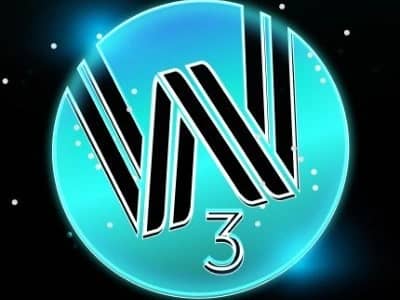위키 구독하기
Share wiki
Bookmark
Wag3s
Wag3s
Wag3s(와그3s)는 Web3 생태계를 위해 설계된 AI 기반 재무 관리 플랫폼으로, 회계, 세무, 인적 자원 및 포트폴리오 추적 서비스를 제공합니다. 분산형 소프트웨어 서비스(DSaaS) 모델을 기반으로 운영되며, 블록체인 거래의 분류를 자동화하기 위해 "Label to Earn" 시스템을 활용합니다. [1] [2]
개요
Wag3s는 Web3 공간에서 널리 퍼져 있는 재무 관리 과제를 해결하는 것을 목표로 합니다. 이러한 과제에는 수많은 지갑, 거래소 및 블록체인 네트워크에 걸쳐 분산된 디지털 자산, 암호화폐 거래에 대한 복잡한 세금 보고, 그리고 분산형 조직 및 개인에 대한 정확하고 일관된 재무 기록 유지의 어려움이 포함됩니다. 이 프로젝트의 목표는 암호화폐 기반 기업, 분산형 자율 조직(DAO) 및 개별 사용자를 위한 이러한 운영을 간소화하는 통합되고 자동화된 솔루션을 제공하는 것입니다. [3]
이 플랫폼은 암호화폐 회계, 세무 준비, 포트폴리오 관리 및 HR/급여 기능을 통합하는 상호 연결된 도구의 올인원 제품군으로 구성됩니다. 이 기술의 핵심은 온체인 거래를 자동으로 라벨링하고 분류하도록 설계된 인공 지능 시스템으로, 수동 장부 관리의 필요성을 줄입니다. AI의 정확성을 높이기 위해 Wag3s는 거래에 대한 태그를 정확하게 지정하여 AI 모델을 훈련하는 데 도움을 준 사용자에게 보상하는 "Label to Earn"이라는 인센티브 메커니즘을 개발했습니다. 이 프로젝트는 스위스 추크에 기반을 두고 있으며, 다양한 모듈의 단계적 출시와 2026년 1분기 예정된 토큰 생성 이벤트(TGE)를 포함하는 개발 로드맵을 제시했습니다. [2] [1]
제품
Wag3s는 Web3 재무 및 운영 관리의 특정 측면에 맞춰진 별개이지만 통합된 모듈 제품군을 제공합니다.
Wag3s Ledger
Wag3s Ledger는 Web3 비즈니스를 위한 실시간 자동 재무 기록 관리를 제공하도록 설계된 플랫폼의 핵심 회계 모듈입니다. 기존 회계 원칙과 암호화폐 거래의 고유한 요구 사항을 결합하여 회사의 재무 건전성에 대한 명확하고 일관된 개요를 제공하는 것을 목표로 합니다. 이 시스템은 투명한 기록을 유지함으로써 오류 및 사기 활동을 방지하는 데 도움이 되도록 설계되었습니다. Wag3s Ledger는 일부 사용자를 위한 조기 액세스 단계에 진입했으며, 2025년 3분기에 정식 공개 출시될 예정입니다. [1] [4]
Wag3s HR
Wag3s HR은 분산형 조직을 위해 구축된 인적 자원 및 급여 관리 플랫폼입니다. 이 모듈은 전 세계적으로 분산된 팀을 위한 직원 데이터 관리, 청구 및 온보딩을 포함한 HR 프로세스를 간소화하도록 설계되었습니다. 주요 기능은 USDT와 같은 스테이블코인이나 ETH와 같은 변동성 자산과 같은 다양한 암호화폐로 기여자에게 지불할 수 있는 다중 토큰 급여 기능입니다. 이 시스템은 DAO 운영에서 영감을 받은 워크플로우를 사용하여 팀 구조를 관리하도록 설계되었습니다. Wag3s HR 모듈의 테스트넷은 2022년 2분기에 출시되었습니다. [5] [3]
Wag3s Folio
Wag3s Folio는 플랫폼의 포트폴리오 관리 및 자산 추적 도구 역할을 합니다. 분산형 지갑, 중앙화된 거래소(CEX) 및 다양한 블록체인 네트워크를 포함한 다양한 소스에서 집계된 디지털 자산을 모니터링하기 위한 통합 대시보드를 사용자에게 제공합니다. Folio의 목표는 개인과 기업이 한 곳에서 전체 암호화폐 포트폴리오를 포괄적이고 실시간으로 볼 수 있도록 하여 자산 관리 및 성과 추적을 간소화하는 것입니다. [1]
youtube:https://www.youtube.com/watch?v=Dj2MQTudLP8Crypto Tax
Crypto Tax 모듈은 암호화폐 활동에 대한 세금 계산 및 보고를 간소화하도록 설계되었습니다. 연결된 지갑과 거래소에서 사용자의 거래 내역을 분석하여 세금 보고서 생성 프로세스를 자동화하는 것을 목표로 합니다. 2024년 7월, "원클릭" 암호화폐 세금 준비 기능이 발표되어 초기 플랫폼 사용자에게 무료로 제공되었으며, 이는 디지털 자산으로 운영되는 개인과 기업 모두를 위한 규정 준수 간소화에 대한 도구의 초점을 보여줍니다. [2]
기능
Wag3s 플랫폼은 포괄적인 재무 관리 솔루션을 제공하기 위해 제품군 전반에 걸쳐 여러 가지 주요 기능을 통합합니다. 중심적인 혁신은 온체인 거래의 자동 라벨링을 위한 AI 기반 시스템으로, 수동 장부 관리 노력을 크게 줄이고 재무 기록의 정확성을 향상시키는 것을 목표로 합니다. [3]
이 AI 시스템은 AI 교육에 대한 커뮤니티 참여를 장려하는 핵심 인센티브 메커니즘인 "Label to Earn" 모델에 의해 지원됩니다. 이 시스템을 통해 사용자는 블록체인 거래에 정확하게 태그를 지정하고 분류하는 데 보상을 받습니다. 이 크라우드소싱 데이터는 지속적인 피드백 루프 역할을 하여 시간이 지남에 따라 AI의 성능을 개선합니다. "Label to Earn" 시스템의 알파 버전은 2025년 4분기에 출시될 예정입니다. [1]
다른 플랫폼 기능으로는 자산 및 거래 모니터링을 위한 완전히 사용자 지정 가능한 대시보드, 사용자가 지갑, CEX 계정 및 기존 은행 계정을 연결할 수 있는 다중 계정 연결 기능, 개인화된 통찰력과 신호를 제공하는 AI 기반 거래 분석이 있습니다. 기업의 경우 이 플랫폼은 자동화된 다중 토큰 급여, 실시간 온체인 비용 추적 및 사용자 지정 보고서 생성을 위한 데이터 내보내기 기능을 제공합니다. [2]
잘못된 내용이 있나요?
